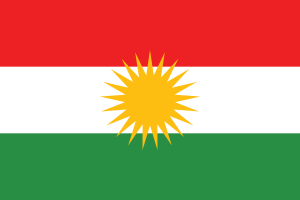Language/Northern-kurdish/Grammar/Place-Adverbs
As a Northern Kurdish language teacher with 20 years of experience, I am excited to introduce you to the world of place adverbs in Northern Kurdish. Adverbs are an essential part of any language as they modify verbs, adjectives, and other adverbs. By studying place adverbs in Northern Kurdish, you will learn how to describe a speaker's location with precision.
Take some time to dive into these other pages after completing this lesson: Present Tense & Personal Pronouns.
What are Place Adverbs?
Before we dive deep into the world of place adverbs, it's essential to understand what they are. Place adverbs are used to indicate the location of the speaker or the described object or person. They describe where something is happening or where someone is going. In Northern Kurdish, place adverbs come after the object they are describing and usually end in "-yê" or "-da."
Here are some examples of place adverbs in Northern Kurdish:
| Northern Kurdish | Pronunciation | English |
|---|---|---|
| başûrê Tirkiyê-yê | ba-ṣû-rê Ti-rki-yë | in the south of Turkey |
| navçeya Amûdê-dî | nav-çe-ya A-mû-dê-dî | in the town of Amuda |
| li ser masê | li ser ma-sê | on the table |
| di derbarê min de | di der-bar-ê min dë | around me |
How to Use Place Adverbs in Northern Kurdish
As mentioned earlier, place adverbs in Northern Kurdish come after the object they are describing.
Here are some examples of how to use place adverbs in Northern Kurdish:
- Ez li ser masê me. (I am on the table.)
- Biçûk di navçeya Amûdê-dî de dimînin. (Small children are playing in the town of Amuda.)
- Şareda me li başûrê Tirkiyê-yê ye. (Our city is in the south of Turkey.)
- Divê tu di derbarê min de bimîne. (You should come around me.)
Remember: Place adverbs usually end in "-yê" or "-da." However, there are exceptions, so it's essential to learn the adverbs by heart.
Exercises
To reinforce what you have learned, I recommend that you practice constructing simple sentences using place adverbs. Additionally, you can practice understanding spoken Northern Kurdish by trying to identify place adverbs while listening to conversations.
Here are some exercise examples:
- Construct three sentences using place adverbs.
- Listen to a conversation and try to identify place adverbs.
Congratulations! You have now reached the end of the Northern Kurdish Grammar → Adverbs → Place Adverbs lesson. Keep practicing, and you'll be speaking Northern Kurdish fluently in no time.

